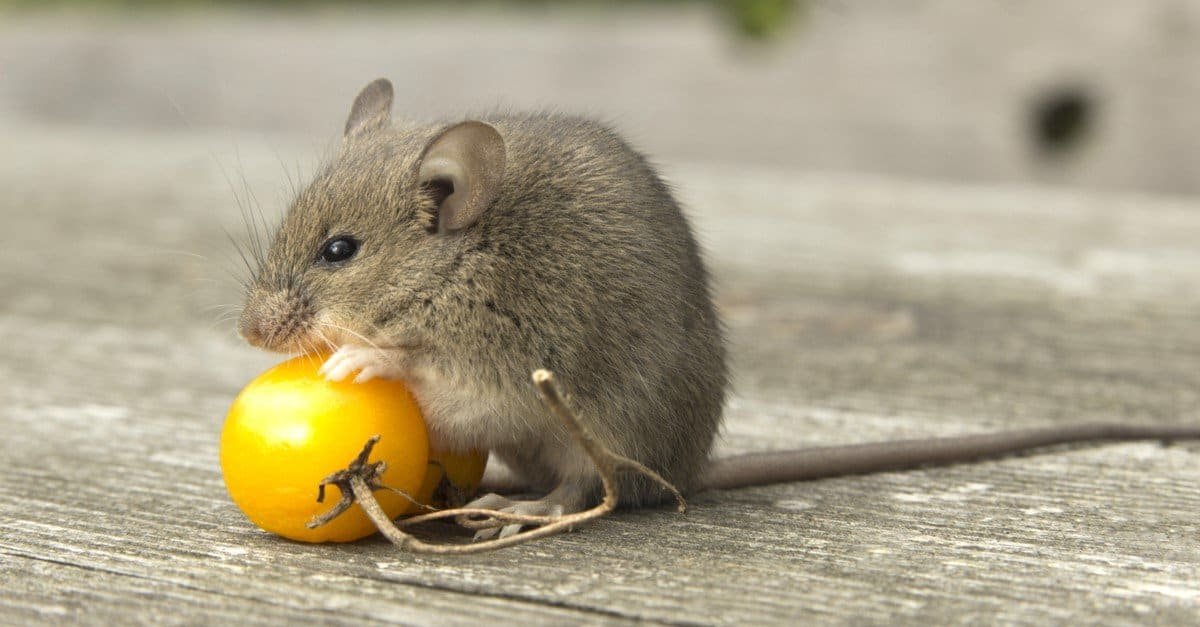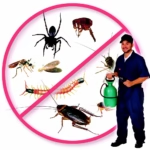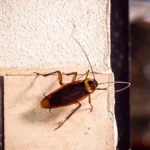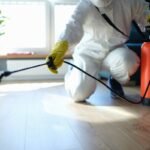Dealing with mice and rats in your home can be more than just a nuisance; these pests can pose serious health risks and cause significant damage to your property. If you’ve noticed signs of rodent activity in your home, it’s crucial to take immediate action to eliminate these pests and prevent them from returning. This guide will walk you through effective strategies to get rid of mice and rats permanently, ensuring that your home remains rodent-free.
Understanding Mice and Rats: Know Your Enemy
Before you can effectively eliminate mice and rats, it’s important to understand their behavior, habits, and the reasons why they invade homes.
Differences Between Mice and Rats
- Size: Mice are smaller, typically around 2.5 to 4 inches long, while rats are larger, ranging from 7 to 9.5 inches.
- Behavior: Mice are curious and tend to explore new environments, while rats are more cautious and often avoid unfamiliar objects.
- Nesting: Mice prefer to nest in hidden, undisturbed areas such as wall voids, while rats are more likely to burrow in the ground or nest in attics.
Why Mice and Rats Invade Homes
- Food: Rodents are attracted to food sources, including crumbs, pet food, and improperly stored groceries.
- Shelter: Homes provide a warm, safe environment for nesting, especially during colder months.
- Water: Leaky pipes, pet water bowls, and other water sources can attract rodents.
Signs of a Rodent Infestation
Identifying a rodent infestation early is crucial for effective control. Here are some common signs to watch for:
- Droppings: Rodent droppings are a clear indication of an infestation. Mouse droppings are small and pellet-shaped, while rat droppings are larger and cylindrical.
- Gnaw Marks: Rodents constantly gnaw on objects to keep their teeth sharp. Look for gnaw marks on food packaging, furniture, wires, and walls.
- Nests: Rodents build nests from shredded paper, fabric, and other soft materials. These nests are often hidden in wall voids, attics, or basements.
- Noises: Scratching or scurrying sounds, especially at night, are common signs of rodent activity.
- Footprints: In dusty areas, you may notice rodent footprints or tail marks.
Ultrasonic rodent repellents are electronic devices that emit high-frequency sounds undetectable to humans but unpleasant for rodents. These devices are designed to repel mice and rats, driving them away from your home without using chemicals or traps. They are easy to use, simply plug them in and place them in areas where rodents frequent. However, their effectiveness can vary depending on the device’s quality and the severity of the infestation. Some benefits include:
– Non-toxic and humane
– Easy to use and maintenance-free
– Can be used in conjunction with other control methods
– No unpleasant odors or mess
How to Get Rid of Mice and Rats Permanently
Now that you understand the behavior of mice and rats, it’s time to take action. The following steps will help you eliminate these pests and keep them from returning.
1. Seal Entry Points
The first and most crucial step in rodent control is to eliminate entry points that allow mice and rats to access your home.
- Inspect Your Home: Conduct a thorough inspection of your home, focusing on potential entry points such as gaps in walls, cracks in the foundation, and spaces around doors and windows.
- Seal Gaps: Use steel wool, caulk, or metal mesh to seal any gaps or holes larger than 1/4 inch. Mice and rats can squeeze through very small openings, so be thorough.
- Install Door Sweeps: Install door sweeps on exterior doors to prevent rodents from entering through gaps under doors.
- Repair Damaged Screens: Ensure that window and door screens are intact and free of holes.
2. Eliminate Food and Water Sources
Rodents are attracted to food and water, so it’s essential to remove these attractants from your home.
- Store Food Properly: Keep all food, including pet food, in sealed containers. Avoid leaving food out overnight, and clean up crumbs and spills immediately.
- Fix Leaks: Repair leaky pipes and faucets to eliminate water sources. Empty pet water bowls at night and store them upside down.
- Dispose of Garbage: Use lidded trash cans, and take out the garbage regularly. Keep outdoor trash cans tightly sealed.
3. Set Traps and Baits
Traps and baits are effective tools for capturing and killing rodents. Here’s how to use them properly:
Types of Traps
- Snap Traps: Traditional snap traps are highly effective for killing mice and rats. Place them along walls, behind appliances, and in other areas where rodents are active.
- Glue Traps: Glue traps capture rodents on a sticky surface. However, these traps can be inhumane and may not kill the rodents immediately.
- Electronic Traps: These traps deliver a lethal electric shock to rodents and are considered more humane than glue traps.
- Live Traps: Live traps capture rodents without killing them, allowing for humane release far from your home.
Baits and Poisons
- Rodenticides: Rodenticides are chemical baits that poison rodents when ingested. Use these with caution, as they can pose a risk to pets and children.
- Bait Stations: Bait stations are tamper-resistant containers that hold rodenticides, making them safer to use around pets and children.
Trap Placement Tips
- Strategic Placement: Place traps in areas where you’ve seen rodent activity, such as along walls, behind furniture, and near food sources.
- Multiple Traps: Set multiple traps to increase your chances of catching rodents. Mice and rats are social animals, so where there’s one, there are likely more.
- Use the Right Bait: Peanut butter, chocolate, and nuts are effective baits for attracting rodents.
4. Maintain a Clean and Clutter-Free Home
A clean home is less attractive to rodents, so maintaining cleanliness is key to preventing future infestations.
- Regular Cleaning: Sweep, mop, and vacuum regularly to remove food particles and crumbs that can attract rodents.
- Declutter: Rodents love to hide in cluttered areas, so keep your home organized and free of unnecessary items, especially in basements, attics, and garages.
- Store Firewood Properly: If you have firewood, store it at least 20 feet away from your home, as rodents can nest in woodpiles.
5. Use Natural Repellents
Natural repellents can help deter mice and rats from entering your home. Here are some options:
- Peppermint Oil: The strong scent of peppermint oil is a natural deterrent for rodents. Soak cotton balls in peppermint oil and place them in areas where you’ve seen rodent activity.
- Ammonia: Ammonia mimics the scent of predator urine and can scare rodents away. Place small dishes of ammonia in areas where rodents are likely to enter.
- Vinegar: Mix vinegar with water and spray it around entry points and other areas where rodents are active.
- Cayenne Pepper: Sprinkle cayenne pepper or chili powder around potential entry points to deter rodents.
6. Consider Professional Pest Control Services
If you’re dealing with a severe infestation or if DIY methods haven’t been effective, it’s time to consider professional rodent pest control services.
Benefits of Professional Rodent Control
- Expertise: Pest control professionals have the knowledge and experience to identify and eliminate rodent infestations effectively.
- Comprehensive Treatment: Professionals can provide a thorough treatment plan that includes sealing entry points, setting traps, and applying rodenticides safely.
- Ongoing Monitoring: Many pest control services offer ongoing monitoring and maintenance to ensure that your home remains rodent-free.
Preventing Future Rodent Infestations
Once you’ve successfully eliminated mice and rats from your home, it’s essential to take preventive measures to keep them from returning.
1. Regular Inspections
Conduct regular inspections of your home to identify and address potential rodent entry points and attractants.
2. Maintain a Clean Home
Continue to keep your home clean and free of food debris. Regularly clean behind appliances, in cabinets, and in other areas where food particles can accumulate.
3. Monitor for Signs of Rodents
Stay vigilant and monitor for any signs of rodent activity, such as droppings or gnaw marks. Early detection is key to preventing a new infestation.
4. Work with a Professional
Consider scheduling regular inspections and maintenance with a pest control professional to ensure that your home remains rodent-free.
Getting rid of mice and rats permanently requires a combination of sealing entry points, eliminating food and water sources, setting traps, and maintaining a clean home. By following the steps outlined in this guide and taking preventive measures, you can successfully eliminate rodents from your home and keep them from returning. If you’re dealing with a severe infestation or need additional help, don’t hesitate to contact a professional pest control service for expert assistance.













